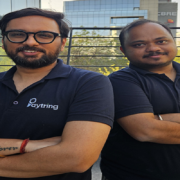Companies are ramping up regional suppliers and production facilities to become less vulnerable to disruption, according to Accenture’s “Resiliency in the making” research. By 2026, 63% of companies in India intend to buy most key items from regional suppliers, up from 34% today. Even more organizations (77%) in India plan to produce and sell most of their products in the same region by 2026, up from 29% today.
According to the report, leaders are prioritizing proximity-based hubs that concentrate production facilities and sales within the same region to streamline logistics, improve inventory management and accelerate response to market demand. Companies must also increase their digital maturity. They need to invest in data, AI and solutions like digital twins. Having more mature capabilities in these areas helps companies build reconfigurable supply chains and autonomous production. These capabilities also enable dynamic, sustainable product development and support decentralized, real-time decision-making at the frontlines of operations.
Sandeep Dutta, Senior Managing Director and Lead – India Business, Accenture said, “Our research shows that only 13% of companies in India have near real-time alerting mechanism for supply chain and production process disruption. To fuel the next phase of India’s economic growth, it is critical to invest in digitizing engineering, supply, production, and operations processes for better visibility and control. It is here that digital, data and AI, can help companies to improve sustainability, customer and employee experience while optimizing costs and improving revenue.”
On average, companies in India are investing $70 million in 2023 to digitize, automate and relocate supply and production facilities, which is expected to increase to at least $2.3 billion in 2026, according to the report.
Disruptive events have surged in recent years, from geopolitical shifts and extreme weather to technology breakthroughs and material and talent shortages. Few businesses sustained their resilience and long-term growth amid the turbulence:
- In 2021 and 2022, globally companies missed out on $1.6 trillion in additional annual revenues because their engineering, supply, production or operations were disrupted.
- At the same time, the 25% most resilient global companies achieved 3.6% higher annual revenues than the 25% most vulnerable companies.
Vinod Kumar, Managing Director and Industry X Lead for Accenture in India said, “As disruption becomes a constant, embracing resiliency is no longer a choice but a necessity to gain competitive edge. In today’s fast-paced consumer and tech-driven world, digital technologies, and solutions such as gen AI and digital twins can help companies unlock new value and adapt faster to sudden changes based on data-driven decision.”
Sustained resiliency is still a distant prospect for many companies. As part of the research, Accenture developed a model to measure engineering, supply, production and operations resiliency on a 0-100 scale. On average, companies in India achieved a score of 51 compared to global average of 56.
The report recommends three areas companies should focus on to increase their resiliency:
- Visibility. Companies should make supply chains and production processes more predictable and autonomous. For example, smart end-to-end control towers monitor processes and analyze different scenarios in real time to detect and correct issues early on.
- Resiliency in design. Moving activities earlier in the development process allows companies to get products, processes and ways of working right the first time. For example, digital twins – digital replicas of physical production facilities down to individual assembly lines and machines – allow product designers and engineers to identify and troubleshoot potential prototype issues or defects and iterate the design before production begins.
- New ways of working. Businesses must upskill the workforce in data, AI and other digital technologies so they can use predictive and visualization tools to make data-driven decisions at the frontlines of business. Today, only 25% of companies in India have such a multi-skilled, digitally literate workforce; 67% plan to have one by 2026.








